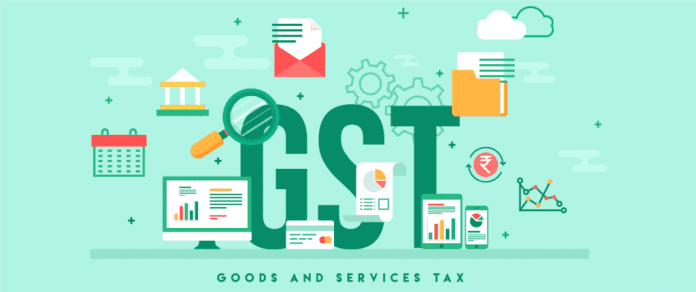GST Rate Cut: The government is planning to remove the 12% GST slab and merge it with 5%. This can make many essential items cheaper. Also, the separate cess levied on luxury and sin goods will be included in the tax itself, which will give more revenue to the states.
GST Rate Cut: GST i.e. Goods and Service Tax was introduced as a single tax system across the country so that different taxes could be combined together. But now after 8 years, the government is going to make another big change, which can directly benefit the common people.
The government is now going to make a big change in the Goods and Services Tax (GST) system. There are plans to remove the 12% tax slab and bring many items under 5% tax slab. This can make many items like shoes, slippers, sweets, some clothes and dairy products cheaper.
Along with this, the extra tax (cess) which is currently levied on expensive items like cars, tobacco, pan masala, cold drinks etc. is also now going to be included directly in the GST rates.
On which things is this cess imposed?
Citing two people associated with the GST Council, Mint reported that the government had earlier imposed the cess to compensate for the losses incurred by the states after the implementation of GST. Later, this cess was extended till March 2026 to recover the loans received by the states during the Corona period.
Apart from GST, cess of up to 22% is currently levied on things like cars, cigarettes and cold drinks. But now the government wants that this tax should be directly added to the GST rate. The advantage of this will be that the tax system will become transparent and the states will get a bigger share.
How much impact will the removal of cess have?
This year this cess will give a collection of about Rs 1.67 lakh crore, but this collection will end after March 2026. According to the government, by merging the cess with GST, customers will not see any difference in the price. Like currently 28% GST + 22% cess is levied on an SUV, in future this tax will be seen directly as 50% GST.
Preparations are also being made to remove the 12% tax slab
The central government plans to completely remove the 12% tax slab and put most of the goods falling under it in the 5% slab. This will make the structure of GST even simpler and customers will also benefit from it. But for this, the consent of the states is necessary because this may reduce the tax income of some states.
If 12% tax slab is removed, will these items become cheaper?
The second major preparation of the government is to abolish the 12% tax slab and bring most of the things under 5% tax.
Major commodities comprising 12%:
- Cheese
- Toffee-Candy
- Dairy Drinks
- Clothes above 1000 rupees
- Shoes upto 1000 rupees
- Preserved Fish
- Brick
- clean energy devices
- condensed milk
- Butter and other fats (such as ghee, butter oil, etc.) and oils obtained from milk; dairy
- spreads
- Cheese
- Brazil nuts, dried, whether or not shelled
- Other nuts, dried, whether or not shelled, such as almonds, hazelnuts or filberts (Corylus spp.), chestnuts (Castanea spp.), pistachios, macadamia nuts, kola nuts (Cola spp.), pine nuts [other than dried betel nuts]
Dates (soft or hard), figs, pineapples, avocados, guavas, mangoes (other than sliced, dried mangoes) and mangosteen, dried. - Citrus fruits, such as oranges, mandarins (including tangerines and satsumas); clementines, Wilkings and similar citrus hybrids, grapefruits, including pomelo, lemons (Citrus limon, Citrus limonum) and limes (Citrus aurantifolia, Citrus latifolia), dried”.
- Fruits, dried, other than those of heading 0801 to 0806; nuts or dried fruit mixtures of Chapter 8 [other than dried tamarind and dried chestnuts (singhada)] whether or not peeled or peeled.
- Fruits, nuts
- Pasta, whether or not cooked (with meat or other ingredients) or otherwise prepared, such as spaghetti, macaroni, noodles, lasagna, gnocchi, ravioli, cannelloni; couscous, whether or not prepared]
- Vegetables, fruit, nuts, and other edible parts of plants, prepared or preserved with vinegar or acetic acid
- Tomatoes prepared or preserved otherwise than by the addition of vinegar or acetic acid
prepared or preserved otherwise than by the addition of vinegar or acetic acid - Mushrooms and Truffles
- Jams, fruit jellies, marmalades, fruit or nut purees and fruit or nut pastes, obtained by cooking, whether or not containing sugar or other sweetening matter
- Fruit, nuts and other edible parts of plants, otherwise prepared or preserved, whether or not containing sugar or other sweetening matter or spirit, not elsewhere specified or included; such as peanuts, cashew nuts, roasted, salted or roasted and salted, other roasted nuts and seeds, squash of mango, lemon, orange, pineapple or other fruit
- All goods, including sauces and preparations, mixed spices and condiments; mustard flour and flours and prepared mustards, curry pastes, mayonnaise and salad dressings
Buris, namkeens, bhujia, mixtures, chabena and similar food preparations made from pulses including textured vegetable protein (soya baris), mungodi and batters, pre-packaged and labelled (other than roasted gram) in ready-to-eat form. - diabetes foods
- Drinking water packaged in 20 litre bottles
- Cotton handbags and shopping bags
- Jute hand bags and shopping bags
- Idols made of wood, stone [including marble] and metals [other than idols made of precious metals]
- Other wooden items; such as clothes hangers, spools, cobs
- Bobbins, sewing thread reels and wooden accessories for various textile machinery, matchboxes,
- Pencil Slats
- Wooden parts, such as oars, paddles, and rudders for ships, boats, and other similar floating structures
- Parts of household decorative articles used as tableware and kitchen utensils [wooden floor blocks, articles of dense wood not elsewhere included or specified
- Parts of household decorative items used as tableware and kitchen utensils
- Sewing thread of man-made staple fibres Carpets and other textile floor coverings, not woven, tufted or flocked, whether or not made up, including ‘kelems’, ‘shoemas’, ‘karamanis’ and similar hand-woven rugs
- Glasses, corrective [for correcting vision other than spectacles]
- Furniture made entirely of bamboo, cane or rattan costs Rs 1,000 more
- Cotton quilts worth more than Rs 1000
- Sports goods other than articles and equipment for general physical exercise
- Paintings, drawings and pastels made entirely by hand, other than hand-painted or hand-decorated manufactured articles; collages, mosaics and similar decorative plaques
- Carved wood products, art objects/decorative
- Wood articles (including inlay work, casks, barrels, vats)
- Original sculptures and statuary in metal, stone or any other material
- If these are shifted to 5%, then these items may become cheaper. Some items will go directly from 12% to 18% tax slab, due to which their prices may increase. However, the government’s focus is to keep everyday items in 5% only.
How is tax distributed under GST?
Under GST, tax is divided into two parts – CGST (Central GST) and SGST (State GST). SGST is given entirely to the states, while the Centre also shares a part of CGST with the states. If cess is included in GST, then states will also get a share of it.
Currently, the central government shares 41% of its tax income with the states. In October 2025, the 16th Finance Commission (led by Arvind Panagariya) will decide the tax sharing formula for the next five years which will be implemented from FY27. If the GST Council is unable to take any decision on the cess by then, the Finance Commission may also be given more time.
What is the impact on essential medicines?
At present, essential and life saving medicines are either out of GST or are taxed at 5%. The rest of the medicines come under 12%. Experts believe that these should also be brought under the 5% slab so that treatment becomes cheaper.
Why is this change necessary?
Prabhat Ranjan, tax consultant at Nexdigm, says that reducing the number of GST slabs to three (5%, 18%, 28%) will make the tax system clear and simple. This will not confuse taxpayers and the customer will also get a clear calculation of the price.
According to Rajat Mohan of AMRG & Associates, even earlier when taxes were reduced, the deficit was compensated by increasing taxes on items like pan masala, cigarettes and tobacco. Perhaps the same method will have to be adopted now as well.
Some financially weak states are worried about this change because if the tax rates are reduced, their income may decrease.
What does the GST Council say?
The GST Council meeting can be held in the third week of July or after the monsoon session. Issues like inclusion of cess, reducing tax slabs to three – 5%, 18%, and 28%, will be discussed in this meeting. Rajat Mohan said that not only rates but many other important issues will be discussed in this meeting like starting GST Appellate Tribunal, implementing a new invoice system, and clearing the rules in complex sectors like online gaming, insurance and real estate.
The biggest target of the GST Council will be to simplify the tax, maintain balance in revenue, and take decisions while understanding the economic needs of all the states.
What benefit will the general public get?
This change can make everyday items cheaper, tax payment and classification will become easier. The government and states will get a higher share of the tax, businessmen will face less complexity. Apart from this, people will see transparency in prices.
If all the states agree, then many items may become cheaper across the country in the coming months.
Most Read Articles:
- IMD Weather Alert: Heavy rain for 2 days in all the cities of UP including Delhi-NCR, Meteorological Department issued yellow alert
- New Rules From 1 July: These 6 big rules related to your money will change from July 1, check all changes here
- Credit Card Link UPI: Link your credit card to UPI from home, know step-by-step guide


